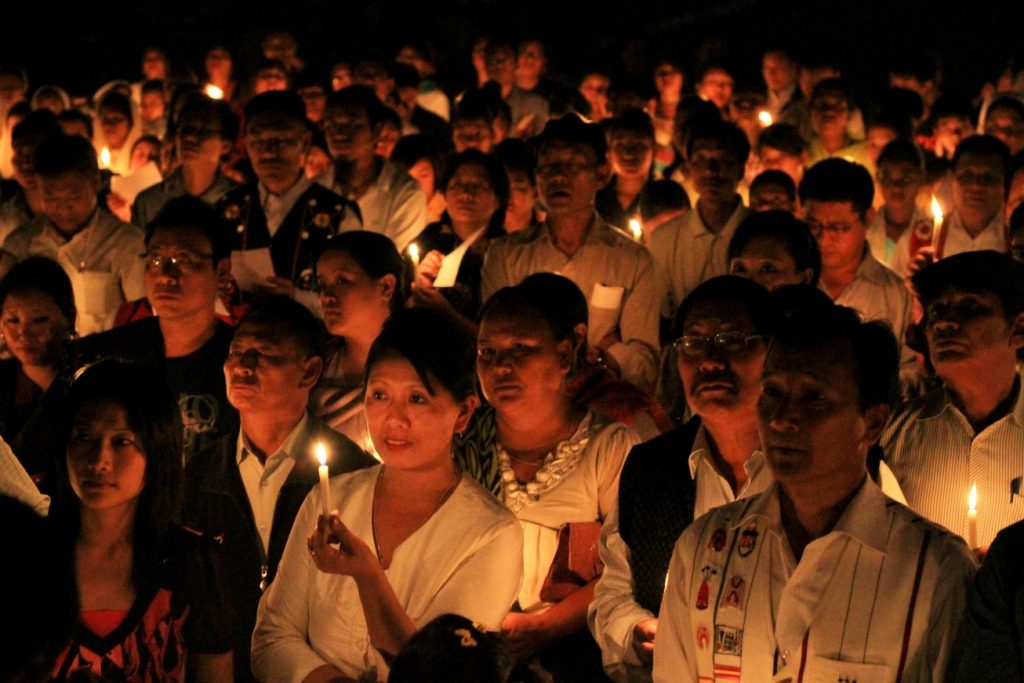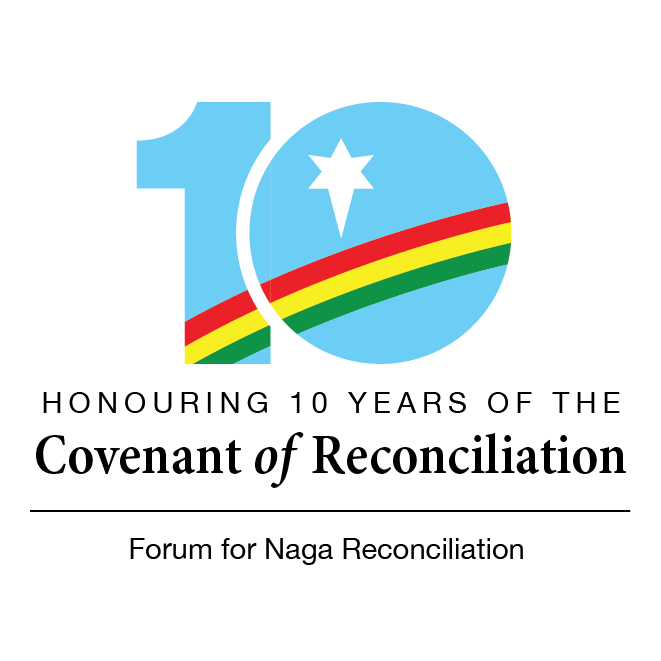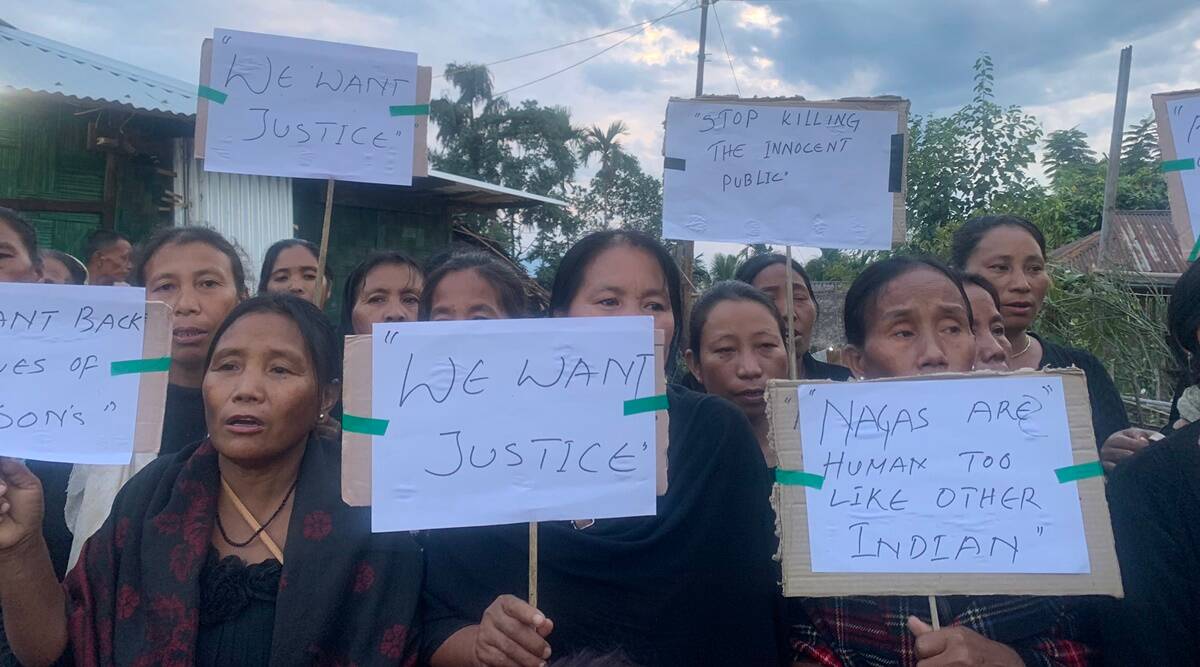By Sanjay (Xonzoi) Barbora*
One of the most enduring acts in human history is reconciliation. Most often, especially in modern times, it is wrapped up in rituals of forgiveness. Yet, as we are reminded by the current decade of work that the Forum for Naga Reconciliation (FNR) has gone through, it is also a process that is oriented outwards and requires the help of people other than ourselves. Therefore, those of us who are documenting the trials and tribulations of our times, we have to spend some crucial moments to sort out the various messages we are confronted with. It is the least that one can expect from a place and people who have been deeply hurt in their engagement with things modern: State, laws and institutions. In this reflection, I look at three discrete processes where I believe that the FNR journey has great resonance for all of us who live in the region.

A Light in the Dark: In order to strengthen the Naga Reconciliation process, a proactive public intervened urging the NPGs highest level leaders to hold a reconciliation meeting. This file photo shows people holding a candlelight march and a prayer vigil in Dimapur (March 2011). The same event was held simultaneously in many other locations and countries, including the US, Australia and India cities.
Teaching Reconciliation:
Why do we need to reconcile, when we can just as well forgive and carry on with our lives? This is a question that has often been thrown at me by inquisitive students in my class. I teach a paper called “Practices of Reconciliation” and every year, a handful of MA students end up taking the course. Their question is a valid one. Many of the texts that we prescribe as compulsory reading take the students on a geographical tour outside the region and into places that they have never been: South Africa, the Balkans or Rwanda. Hence, there is a somewhat disembodied connection with the issue within the room when we discuss reconciliation and not forgiveness.
Forgiveness, I have tried to reason with them, is a personal act that is almost a compulsion for those who believe in religion or may simply be spiritual. It was inscribed into my childhood prayers, as I am sure many others will testify to a version of it being part of theirs. It was essentially a very personal prayer that required the individual to give up feelings of vengeance, arrogance and pride, so that she or he could find some balance in life. As I grew older, I moved away from all forms of organised religious life, but I always remembered the spirit of forgiveness that was inculcated in me. As I began to read more and discuss philosophical works with my friends and peers, I realised that organised religion was important for us because it gave us individual parameters for our actions. Forgiveness, therefore, was a reasonable way to remain grounded in life and not necessarily a religious one. It made perfect sense to retain the ethics that I had picked up in my Catholic school, as I moved along in life.
My brief digression into personal history and upbringing is to actually drive home a point about the difficulties associated with reconciliation. While my students and I are able to relate to forgiveness as a sign of individuality, we are always stuck when it comes to seeking something similar when another person is involved. That is where all our readings converge: we are told over and over again, by force of evidence from different contexts that reconciliation involves more than one person. It is a collective effort, both deeply political and poignantly doomed to being misunderstood as a sign of weakness. It is a sign of our times that we fail to recognise the political maturity that is required for any society to undertake the long and difficult journey of reconciliation. Instead, we tend to attribute all kinds of weakness to those who seek to find a process of dialogue. In a land where every community feels that their neighbours have hurt them, this can be an impediment to peace building.
People and Suffering:
In 2005, many villages in Assam’s Karbi Anglong district were subjected to violence, targeted killings and forced displacement. The administration and the media said that this was the result of a conflict between two factions of armed groups who claimed to represent the Karbi and Dimasa people. The conflict began in the autumn and continued into the winter months. With friends on both sides of the growing ethnic divide, we were torn by the events. For weeks at a stretch, friends and colleagues would foray out in our cars from Guwahati to Hamren sub-division and at times even to Diphu sub-division, trying to figure out if our friends’ families had managed to make it out of their homes in time.
A Dimasa friend had just started his new job and moved into his office in Gauhati University. To celebrate, he had taken a few of us to his village in a borrowed car in the middle of summer just before the terrible events were to take place. We drove through a beautiful valley, stopping to drink tea in isolated shacks until we reached his village. His parents welcomed us and his father proudly showed us the fruit trees that he had planted. We ambled from one locality to another, stopping now and then as our friend pointed to a particular patch of land that used to be his school-without-a-roof; or where he once got a walloping of a lifetime from the teacher for dodging class. Every few minutes, we would be invited into a different house in the village for a few bowls of rice beer. Each house was an amazing repository of stories about our friend and his classmates. Every person spoke Assamese, so we could not tell if we were in a Dimasa, or a Karbi house. After a few houses, our friend taught us the subtle differences between judima and hor, one we tasted mainly in Dimasa houses and the other in Karbi ones. After a few houses the differences did not matter.
However, as the months following our almost idyllic trip would show, it takes very little for a conflict to break out and be sustained over a long period of time. Our friend’s parents managed to escape from the village, as did most other Dimasa families who lived there. Their Karbi neighbours were able to protect them for a while, but were soon unable to withstand the pressure that local militia leaders – perhaps working at the behest of others – were exerting on the community. One day, after the Dimasa families had left, some young men from outside the village came and burnt down the granaries and chopped down all the marvellous fruit bearing trees. Our friend, who went back to the village once to see if anything could be retrieved, showed us the photographs, sobbed and asked: “Why did they chop down the trees?”
The Need for Dialogue:
The answer to such heartfelt, seemingly straightforward questions require the participation of others. Someone has to reach out and make sure that we begin a process of dialogue that involves different parties to the conflict. In the snapshot I drew upon above, one can sense a range of answers that might emerge. The fruit trees were cut down for money, for spite, in anger, as a way of asking the family never to return, or simply as an act of mindless destruction that is symptomatic of the long years and decades of militarisation that we have been subjected to. This is where the reconciliatory processes begin and have to find ways to swim out of the deep, troubled waters that we find ourselves. It is not as if these processes are missing, for one sees them being initiated around us in uncanny places: churches, family gatherings, village councils, and offices, all struggling to initiate some dialogue to ensure that we are able to move forward together.
As I struggle to make sense of reconciliation in the classroom and outside, I realise that much of the confusion comes in reintroducing the State into the matrix. This is where FNR’s experience can be instructive for the on-off efforts at reconciliation across our region. For far too long, we have succumbed to the narratives of “ethnic conflict”, “inter-tribal conflicts” and other demeaning descriptions of militarisation. These narratives shame survivors and victims into thinking that we have been responsible for the violence, while deftly absolving the State from its role in the whole matter. In doing so, we have to find a scale that will allow for a meaningful conversation with the state; especially the various interest groups that compete for its attention. FNR has studiously kept the scale of its dialogic process manageable by reminding us of a universal need for dignity in the quest for justice and peace. This has allowed for open, frank interactions between those who are the public face of the State – politicians, bureaucrats, and policy-makers – as well non-State actors. The latter are all the more important in our region, since they aspire to create an alternate organising principle for our societies, based on ideas of resistance and justice.
This role is not always apparent to all. For the kind of dialogues that allow forgiveness and justice to coexist, we need to constantly adapt to the different scales that are demanded of us in the process of reconciliation. FNR therefore has to document, disseminate and drawn lessons for the rest of us who are attempting similar processes throughout the eastern Himalayan region.
About the author:
*Sanjay (Xonzoi) Barbora is a sociologist and teaches at the Tata Institute of Social Sciences, Guwahati Campus. He has been associated with the human rights movement in Assam since 1995. He writes primarily about human rights, trade union, agrarian and media related issues. Views expressed in this article are personal.








 The Top Viral YouTube Videos of 2017
The Top Viral YouTube Videos of 2017 An orbiting message of peace
An orbiting message of peace What Does Your Face Say About Your Health?
What Does Your Face Say About Your Health? The last Konyak headhunters of Nagaland
The last Konyak headhunters of Nagaland










Leave a Reply
Your email address will not be published. Required fields are marked (required)